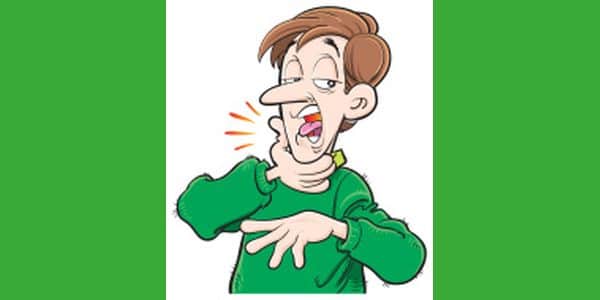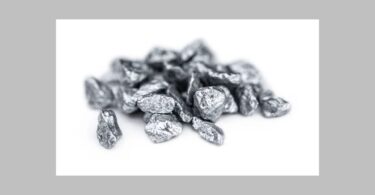Circa 2005
I traveled to Ocean Grove New Jersey to visit a good friend. While there I stumbled upon a luncheonette that years before had been a homeopathic pharmacy. Among the artifacts and remedies kept on display for tourists was a small, never opened carton labeled “Dr. Humphrey’s Remedy #34 for Sore Throats” that included instructions for use that I purchased it for a nominal amount.
A vial within the container lists contents that almost a hundred years later are still appropriate for the majority of sore throat complaints. These are a combination of the individual, low potency remedies: Apis 2x, Lachesis 6x, Phytolacca 2x, and Merc Iodatus Flavus 2x.
Despite expiration dates that today’s medicines are required to indicate it is my experience that well maintained homeopathic remedies never expire. A personal fantasy is that one day five or so sore throat sufferers will together present themselves in my office. Then, like in the ceremonial uncorking of an ancient and vintage wine bottle, I will open Dr. Humphreys’ early 1900’s medicine, dose these clients and instantly discover how well the medicine works.
Before discussing the sore throat remedy some background about Dr. Frederick Humphreys is in order. He was born March 11, 1816, in Marcellus, Onondaga county, N.Y. In 1823 his family relocated in Auburn, N.Y. He married Cornelia Palmer and soon after entered the ministry of the Methodist Episcopal Church.
When Cornelia died, he returned to Auburn where for five years he struggled as a preacher while also holding down a job as physician. Viewing his doctoring as an unwelcome distraction from preaching his brethren ministers soon lost patience with Humphreys. Their antagonism compelled Humphreys to remove himself to Utica, NY where he forsook the ministry and joined forces with his venerable father, Dr. Erastus Humphreys.
A homoeopathy enthusiast, Frederick Humphreys’ medical practice in Utica was a success. So as to further advance his skill in 1848 he entered the Pennsylvania Homoeopathic Medical College in Philadelphia studying for three years with the renowned Dr. Constantine Hering. Humphreys gained his Doctor of Homoeopathic Medicine degree in 1850.
Humphreys came to be deeply respected. Collaborating with his father he produced a series of “Tracts for the Times,” explaining their homoeopathic philosophy. Humphreys also wrote “Cholera and its Homoeopathic Treatment,” a monograph on dysentery.
He also wrote papers detailing a proving of Apis Mellifica, (venom of the honey bee) and a proving of the Plantago Major plant. He served as Chairman of the Bureau for the Augmentation and Improvement of the Materia Medica of the American Institute of Homoeopathy and for three years was a lecturer at his alma mater, the Pennsylvania Medical College of Homeopathy in Philadelphia.
What Humphreys is best known for is discovering the efficacy of combinations of medicine and marketing them for popular consumption. But terming his medicines homoeopathic specifics caused a big problem. His doing so caused a rupture between himself, the college and all his professional friends and associates, all of whom reasonably feared that the comingling of “condition-specific” homeopathic combinations medicines with less than reputable patent medicines would confuse the public.
A dreaded consequence it was thought, as the high standing of single dose, symptom-totality addressing homeopathic medicine was undermined would be public disenchantment with constitutional homeopathy. Humphreys countered that no, the homeopathic profession would be helped, not hindered. The simplicity, practicality and effectiveness of his remedies for everyday maladies would elevate the public’s respect for homeopathy and its practitioners. Which side was right?
In the era when homeopathy was at its zenith Humphreys was right. But long since then in the wake of relentless, mega-funded pharmaceutical and conventional medicine anti-homeopathy campaigns academic homeopathic medicine establishment’s fears have come to pass.
Deprived of familiarity with the law of similars and with diminished confidence in a vital force’s sensitivity to micro-dosing, the public no longer can distinguish among nutritional supplements, medicinal herbs, patent medicines, vitamins and over-the-counter homeopathics (the only one of which, oddly enough can boast possessing the official status of being drugs).
The average consumer thinks that anything gentle is homeopathic. Or that other words starting with the letter H such as “herbs” and “holistic” are synonymous with “homeopathic.” But as over-the- counter remedies continue to keep homeopathy at least subliminally before the public the issue remains vexed to this day.
Back to Frederick Humphreys, in the course of the doctor’s twenty-five year-long effort the production of “specifics” manufactured by his Humphreys Homoeopathic Medicine company ramped up production to the point of becoming internationally known.
Humphreys’ success as an energetic business manager was abetted by the popular and accessible manual he wrote that remains in print in English, German, French, Spanish and Portuguese. At its height the manual was distributed at the rate of 3,000,000 copies a year[1].
Another coup was his corollary homeopathic veterinary manual. Humphreys became a wealthy man but not by dint of his business acumen alone. The extraordinary effectiveness of his homeopathic combination remedies deserves the credit as well.
Let us examine the ingredients of Dr. Humphreys’ sore throat specific.
Remedy #34 for Sore Throats and its Ingredients
Apis Mellifica 2x (from crushed, angry honey bees)
This low potency remedy relieves the sore throat of someone with a dry fever that alternates with sweating, facial flushing and when the throat is very sore with swollen tonsils. Pain may extend to the ears, and the eyelids may be swollen.
Exposure to cool air and cold applications may bring relief. When given constitutionally (and the issue may play into why the person is susceptible to sore throat in the first place) often present is an underlying life conflict between work and procreation.
Lachesis Mutata 6x (from the venom of the Brazilian Bushmaster snake)
This low potency remedy relieves throat pain with swelling that is initially worse on the left side but may spread to the right; symptoms are worsened by warmth, warm liquids, swallowing (including saliva), and constrictive clothing. Someone needing this remedy will likely be a chatterbox prone to jealousy, with an intense, seductive personality.
People needing snake remedies constitutionally struggle to control their primordial instincts (what Freud called the Id and that is housed in the body’s trunk) with the need to suppress primordial or convert primordial reactions (such as via sublimation (singing or chattering) via a suppressive agenda housed “in the head.” Separating the head from the trunk of the body is the terrain of the throat where pathology such as a sore throat or difficulty swallowing consequently occurs.
Phytolacca Decandra 2x (made from poke root)
This low potency remedy is called upon when the tonsils are red, swollen, with white spots, that may coalesce into patches. The pains run up into the ears, usually accompanied by an aching, bruised, sore feeling in head, back and limbs. There is usually also an irresistible inclination to bite the teeth or gums together. Though the remedy’s psychological picture is difficult to pin down it is a strong stand-by for sore throats.
Merc Iodatus Flavus 2x (yellow iodide of mercury)
This low potency remedy has a strong indication for tonsillitis when only the superficial part of the tonsils is involved. Usually present too, are a cheesy exudate and offensive breath. Swelling typically begins on the right side, small ulcers appear on the posterior pharynx.
There appear easily detached patches on inflamed pharynx and arched opening at the back of the mouth leading to the pharynx. The right side of the pharynx is worse with much tenacious mucous, sensation of a lump in the throat and constant urge to swallow. As with Phytolacca the psychological “picture” is hard to pin point but also unnecessary to the prescribing of this remedy for tonsillitis when the determining symptoms are present.
 1930 Edition of Humphrey’s Manual of Homeopathic Remedies
1930 Edition of Humphrey’s Manual of Homeopathic Remedies
The cover of Frederick Humphrey’s “Manual on the Care and Treatment of all Diseases Safe to Treat At Home,” revised edition, copyright 1930 by Humphreys Homeopathic Medicine Company, Lafayette and Prince Streets, New York, NY.[2]
Notes on Combination Remedies
If the idea of homeopathy is to closely match a single remedy with the constellation of a patient’s total symptoms why and how does a combination “specific work”? There are several reasons:
- Though different in theme only one of the remedies will be highly indicated for the condition. It’s action in that case would completely override the meaningless input of its companion remedies. A question arises: if the vital force of someone with a condition such as a sore throat “reaches out” to the pertaining remedy in a combination, what then is the limit to the number of remedies that can effectively be combined? I have seen advertised homeopathic remedy combinations with over a dozen ingredients. Is there in fact, a limit? The issue has never been adequately investigated and may prove resistant to a conclusive answer. Yet an analogy comes to mind. When ex-vice president Dick Cheney used to go duck hunting he did so unsportingly, firing a scattershot rifle whose wide band of bullets could not fail to hit at least one duck on the wing. At some point an excess of remedies “fired” at a condition will interact with the vital force but do so in a non-sporting fashion. This is to say negatively because there exist antithetical, even antidoting relationships among remedies. A “duck” may fall and a single symptom be diminished but likely collateral effects will entail.
- Low potency remedies such as the 6x that Dr. Humphreys employed have a general effect across a broad range of individuals. But because they are not as highly individualized as a C range, or higher potency remedy (where a high-stakes bet on the accuracy of a single dose prescription has been made) these as we know require frequent repeating. Low potency combination remedies ameliorate symptoms and support the vital force. The single dose, high potency prescription on the other hand is intended to work in the direction of a cure.
- Longtime homeopaths develop what is called a morphic field. This is to say that prolonged use of and familiarity with certain remedies in the practitioner’s hand has the effect of the remedy’s growing in strength. My conjecture is that a combination remedy used over time also gains power via developing a morphic field. Combined remedies grow so “used” to rowing in the same direction that in their cooperative effort the synergism of an “amalgam” remedy emerges.
- In Europe traditions of combination remedy prescribing evolved that seek to account for how remedies in combination relate to one another. Through trial and error, utilization of remedies from a rich diversity of disparate “kingdoms” such as plant, animal, mineral, or the realm of nosodes synergistic combinations are emerging.
The selection combinations produce specific, bodily supporting medicines such as Unda Number Homeopathics whose numbered compounds comprise a system of complex remedies able to prompt the body’s shedding of accumulated toxicity.
According to Unda theory, because each cell in the body functions like an individual ecosystem Unda compounds are formulated with groups of remedies possessing an affinity for specific organs and bodily “ecosystems.” The Undas were formulated in Europe in the early 1900s in accordance with Chinese Medicine theory as well as homeopathic and Anthroposophic principles.
Emmanuel Felke, Dr. Humphreys’ “twin”
Though he was born forty years later than Frederick Humphreys in 1856, Emmanuel Felke might as well have been his separated at birth twin. Both men were big bearded, renegade health care innovators on the run from disparaging ministerial colleagues who became obsessed with combining remedies.
In Europe Felke is deemed the co-father of combination homeopathic remedies. Deviating from Hahnemann’s teachings he mixed together different potentized substances so as to treat chronic diseases. In addition to homeopathy his creative methods feature the Felke sitz-bath; light-and-air bath; clay bath; ground sleeping (lying down on and sleeping on the ground at night). In the course of his recommendations taking root, Felke became celebrated. He remains known as one of the founders of naturopathic medicine in Europe today.
© Jerry Kantor
[1] http://www.homeoint.org/cazalet/humphreys/biography.htm
[2] America’s Successful Men of Affairs: An Encyclopedia of Contemporanious Biography, p. 334, Sylvain Cazalet 2001







Thank you very much for these informative and thought-provoking historical overviews. Keep them coming!
Never let us loose sight of what the ‘old uns achieved.
this article about combination of medicines and its usefulness has been explained fantastically through Historical existance, which was ignored by orthodox Homoeopaths,. in reality it is a ” stepping stone for the success” in the practical field. Thank you very much for bringing it forward. i have been using combination of medicines along with constitutional remedies since many years and have highly successful ratings.
At the same time of Dr Humphrey, in Italy there was a combination non qualified homeopath known as Solleri. He was imprisoned for practice. In prison he joined with a prisoner,a doctor by name Belloti and continued his successful practice!. This combination is known as Sollori-Belloti mixtures .
Dr Hering also selling home homeo remedies similar to Dr. Humphrey.
Some grammatical and spelling mistakes are there in above comment. I don’t know how to edit.
At the same time of Dr Humphrey, in Italy there was a combination medicine Prescriber,non qualified homeopath known as Solleri. He was imprisoned for practicicing without licence. In prison he joined with a prisoner,a doctor by name Belloti and continued his successful practice!. This combination is known as Sollori-Belloti mixtures .
Dr Hering also selling home homeo remedies similar to Dr. Humphrey.
Hello sir
Solleri – Belloti mixtures are even now available in the name of Specifics by Fr.Muller’s Homeopathic poor dispensary, Mangalore, South Karnataka.